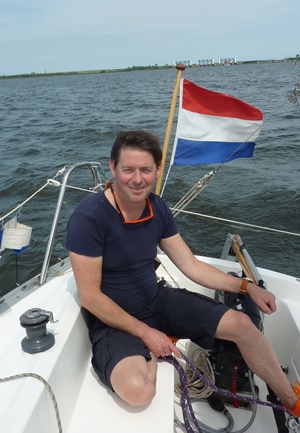 How to speed up recycling of wind turbine blades
How to speed up recycling of wind turbine bladesRecycling is a hot theme in the wind industry and we have already published several articles about it in Windtech International. About 85 to 90% of a wind turbine can already be recycled. However, the bottleneck preventing 100% recyclability is the blades. Blades consist mostly of composite materials which are difficult to recycle. To speed up recycling of blades (and other composite components) WindEurope has called upon the European Commission (EC) to propose a Europe-wide ban on the landfill of decommissioned wind turbine blades by 2025. To support this ban (European) governments should increase funding for research and development in the commercialisation and scale-up of different blade recycling technologies.
The industry is already playing its part. Today, the main technology for recycling composite waste is through cement co-processing. An example of this is the cooperation between GE and Veolia North America. Veolia will process the blades for use as a raw material for cement, utilising a cement kiln co-processing technology.
There are already other existing technologies to recycle wind turbine blades. For example, the University of Tennessee (UT), Knoxville, USA, is developing a new technology for the large-scale recycling of wind turbine blades into new composites. The technology it uses recovers the glass fibre from reinforced polymer composites while limiting mechanical degradation of the fibre during the reclamation process. UT has partnered with Carbon Rivers, a start-up company located in Knoxville. Over the next two years, the UT–Carbon Rivers team will collaborate with GE Renewable Energy, Berkshire Hathaway Energy’s MidAmerican Energy Company, and PacifiCorp utilities to develop a pilot-scale glass fibre composite recycling system that will serve as the basis for eventual deployment of a full-scale commercial wind blade waste processing plant.
The best strategy for wind turbine blades is one that combines design, testing, maintenance, upgrades and the appropriate recycling technology to ensure the maximum value of the material is retrieved throughout its lifetime. An example of this is the Zero wastE Blade ReseArch (ZEBRA) project. The ZEBRA project focuses on developing 100% recyclable wind turbine blades using different material and processes. This project, driven by French research centre IRT Jules Verne, brings together industrial companies and technical centres to demonstrate on a full scale the technical, economic and environmental relevance of thermoplastic wind turbine blades, with an eco-design approach to facilitate recycling. Within the ZEBRA project, LM Wind Power will design the product and process and manufacture two prototype blades using Arkema’s Elium resin in order to test and validate the behaviour of the composite material and the feasibility of its industrial production. In parallel, the ZEBRA project partners will focus on developing and optimising the manufacturing process by using automation to reduce energy consumption and waste from production. Project partners will then explore methods to recycle the materials used in the prototype blades into new products.
For the industry itself it is also important to find ways to recycle the blades; it will strengthen (the image of) wind energy as a real ‘green technology’. WindEurope expects around 25,000 tonnes of blades to reach the end of their operational life annually by 2025. Towards the end of the decade the annual decommissioned volume could double to 52,000 tonnes by 2030. If these all end up in landfill, the general public might see wind energy as no longer sustainable and become more and more against it.
The currently available technologies to recycle blades are not mature enough and not cost competitive. Making these technologies commercially viable requires commitment and funding from policymakers, other composite users and the recycling industry. A ban on landfill will speed things up but has the EC the courage to already introduce this ban in less than four years? History has taught us that institutions like the European Commission take their time to implement changes that can really make a difference. Time will tell.
Enjoy reading,
Floris Siteur
Publisher
Publisher
